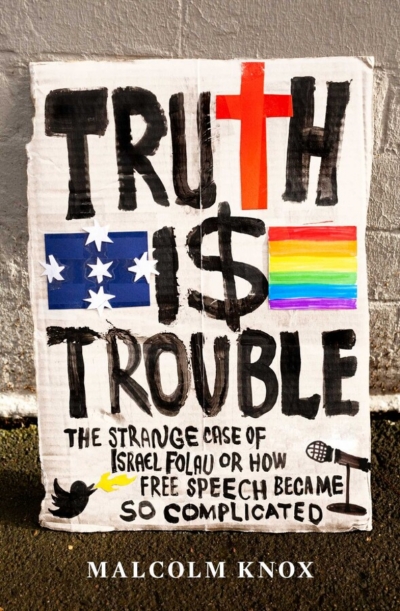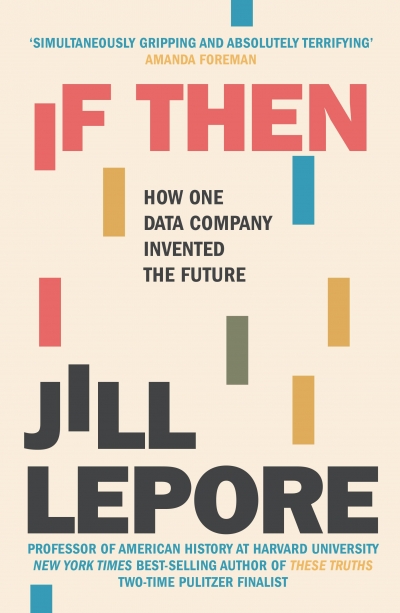Society
Truth Is Trouble: The strange case of Israel Folau or how free speech became so complicated by Malcolm Knox
Late January 2021 brought a moment of anger and anguish for many liberal Australians. Margaret Court, the erstwhile tennis champion turned Pentecostal Christian preacher, had just received Australia’s top honour. Court may have won more grand slam tournaments than any other player, but her record cannot erase a history of derogatory comments about gay and transgender Australians. And yet, I wonder if most Australians didn’t just mentally check out of this latest chapter in a thirty-year kulturkampf over sexual identity. This is a country increasingly willing to live and let live – but not obsess – over such matters.
... (read more)Liz Byrski’s introduction to Women of a Certain Rage is, among other things, a homage to second-wave feminism and a lament that feminism, ‘originally a radical countercultural movement’, has been ‘distorted into a tool of neoliberalism’. While there is no doubt that strains of feminism have been co-opted by neoliberalism to debilitating effect, this narrative – that feminism has become ineffectual since the 1970s – is one that erases many contemporary feminisms, as well as broader feminism-informed political movements and the work that they have done and continue to do.
... (read more)If Then: How one data company invented the future by Jill Lepore
Long before Amazon, Twitter, and Facebook, a company called Simulmatics Corporation sought to predict and control human behaviour through the analysis of big data. If Then tells the story of that company, from its humble beginnings in a tiny office on Madison Avenue to the hallways of political power in Washington, DC.
... (read more)Reconnected: A community builder’s handbook by Andrew Leigh and Nick Terrell
Disaster movies tend to follow a similar arc. Our band of heroes not only has to survive flames engulfing the skyscraper or sea water flooding the cruise liner, but must also triumph over the calculated selfishness of others who are also scrambling for salvation. The implication is that, with few exceptions, Thomas Hobbes was right. Amid the upheaval of the English Civil War, Hobbes declared that our natural human condition is a war of all against all, and that order can only be secured by a powerful ruler, a Leviathan, that keeps our naked urges in check. The social contract of considerate behaviour and thoughtfulness towards others is a thin veneer. Under pressure it peels away, and we are soon at one another’s throats in a life that is solitary, poor, nasty, brutish, and short.
... (read more)Fire Flood Plague: Australian writers respond to 2020 edited by Sophie Cunningham
A detailed timeline prefaces Fire Flood Plague. Stretching from September 2019 to September 2020, it charts events so momentous that Christos Tsiolkas describes them as being ‘imbued with an atavistic, Biblical solemnity’. Sophie Cunningham, the book’s editor, notes in her introduction that many of the contributors (herself included) have found themselves drafting their essays ‘once, twice, thrice, as we’ve progressed from bushfire and smoke-choked skies, to the early days of the pandemic … and into the exhaustion of what is becoming a marathon’.
... (read more)Tjanimaku Tjukurpa: How one young man came good by the Ngaanyatjarra Pitjantjatjara Yankunytjatjara Women’s Council
At first glance, the slender paperback, with its cover drawing of dark-skinned men and boys, looks like a conventional illustrated children’s book. A few pages in, it’s clear that Tjanimaku Tjukurpa is something else. The version I have is in Pitjantjatjara and English. There is also an edition in Ngaanyatjarra and English. To anyone familiar with remote Aboriginal communities, the illustrations vibrate with authenticity – the landscape, the buildings, the cars, the appearance and demeanour of the people. This is a story embedded in the reality of community life. Told through the eyes of a concerned grandfather, it is a narrative played out in various iterations across the Indigenous world.
... (read more)The Book of Trespass: Crossing the lines that divide us by Nick Hayes
The concept of ‘trespass’ first entered English law records in the thirteenth century. That this appearance fell between the arrival of William the Conqueror in 1066 and the reformation of the English church by Henry VIII in 1534 is no accident. As Nick Hayes shows in The Book of Trespass, the process by which the English commons were enclosed by the statutes of the wealthy landowning class was slow but resolute; and it had everything to do with, on the one hand, the arrival of Norman delineations of property and, on the other, the disbanding of the monasteries that had worked in a bartering symbiosis with the people of the common landscapes of England.
... (read more)What Happens Next? edited by Emma Dawson and Janet McCalman & Upturn by Tanya Plibersek
What is to be done? The question is asked whenever humankind confronts a new crisis. And the answers, whether from biblical sources, Tolstoy, or Lenin (or indeed Barry Jones in his imminent book, What Is To Be Done?), must confront universal moral quandaries at the same time as they address local needs, hopes, and aspirations.
... (read more)The Pink Line: The world’s queer frontiers by Mark Gevisser
In 2011, then Secretary of State Hillary Clinton proclaimed that ‘gay rights are human rights’. This statement, which would seem uncontroversial to most readers of ABR, was widely attacked as a symbol of Western neo-colonialism. Combined with the 2015 US Supreme Court recognition of same-sex marriage, gay rights were seen by many religious and political leaders as a threat to tradition, culture, and religion, even when, as in many parts of Africa and the Pacific, laws proscribing homosexual behaviour are the legacy of nineteenth-century colonialism.
... (read more)It began with a request to overturn a controversial bill that would have allowed people to be extradited to mainland China. According to the bill’s many detractors, this was but the latest example of the erosion of Hong Kong’s freedoms. By June 2019, millions of Hong Kong’s residents had taken to the streets. August saw sit-ins at Hong Kong’s International Airport, and by October clashes between police and protestors were characterised by violence and chaos – tear gas, rubber bullets, arrests, and prosecutions, the norm. This was summer in Hong Kong, a city dominated by increasingly violent upheaval with the world watching on.
... (read more)










